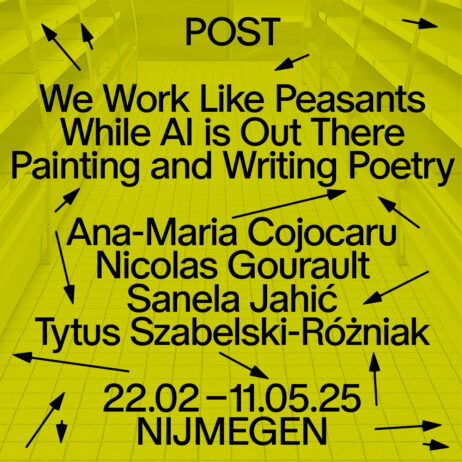How the Stedelijk Museum Amsterdam refused to let ‘Bakunin’s Barricade’ be an actual barricade against the ongoing genocide
The Not Surprised Collective requested deploying Ahmet Öğüt’s Bakunin’s Barricade from the Stedelijk Museum, in June. They felt compelled to bring the voice of the visual arts to the resistance that other fields were already showing against the ongoing genocide. Purchased in 2020, the work has since been kept in storage, in waiting. But the barricade began to live a life of its own, caught in the crossfire of political discourse. Its sudden relevance sprang from stylistic similarities to student encampment for Palestine constructions from May 2024, and from its conceptual beauty—a barricade designed not only as a symbol but as something deployable, to be used in moments of social transformation, via the contract that accompanied it.
“I’ve been wondering why artists are required to dream up liberation in the gallery but when that dream meets life we are shut down. I want the separation between the expression of politics in a gallery and the practice of politics in life to disappear. I want the institution to understand that if you want us inside you need to listen to us outside. We needed a ceasefire a very long time ago. We need a proper ceasefire now. Arms embargo now. Free Palestine!”
Jasleen Kaur, Turner Prize 2024 speech, December 3rd, 2024.
Stop me if you’ve heard this one before: Bakunin’s Barricade is a work that’s been beaten to death to illustrate the hypocrisy of Dutch art institutions. Institutions that have said nothing about the ongoing genocide perpetrated by Israel in Palestine.
Once a sharp tool, Bakunin’s Barricade has been blunted, dulled by the very institution that is the Stedelijk Museum Amsterdam. Purchased from artist Ahmet Öğüt in 2020 during the Municipal Acquisitions Exhibition, the work has since been kept in storage, in waiting. But the barricade began to live a life of its own, caught in the crossfire of political discourse. Its sudden relevance sprang from stylistic similarities to student encampment for Palestine constructions from May 2024, and from its conceptual beauty—a barricade designed not only as a symbol but as something deployable, to be used in moments of social transformation, via the contract that accompanied it.
I, too, am guilty of believing an artwork can be a tool of resistance. After all, I am part of the Not Surprised Collective, which requested Bakunin’s Barricade from the Stedelijk Museum earlier this year, in June. I did this alongside a list of cultural workers: Emin Batman, Esmee Schoutens, Jeftha Pattikawa, Juha van ’t Zelfde, Macarena Loma Yevenes, Maren Siebert, Mitchell Esajas, Pieter Paul Pothoven, Raul Balai, Rowan Stol, Sepp Eckenhaussen and Stefanie van Gemert.
We felt compelled to bring the voice of the visual arts to the resistance that other fields were already showing against the ongoing genocide.
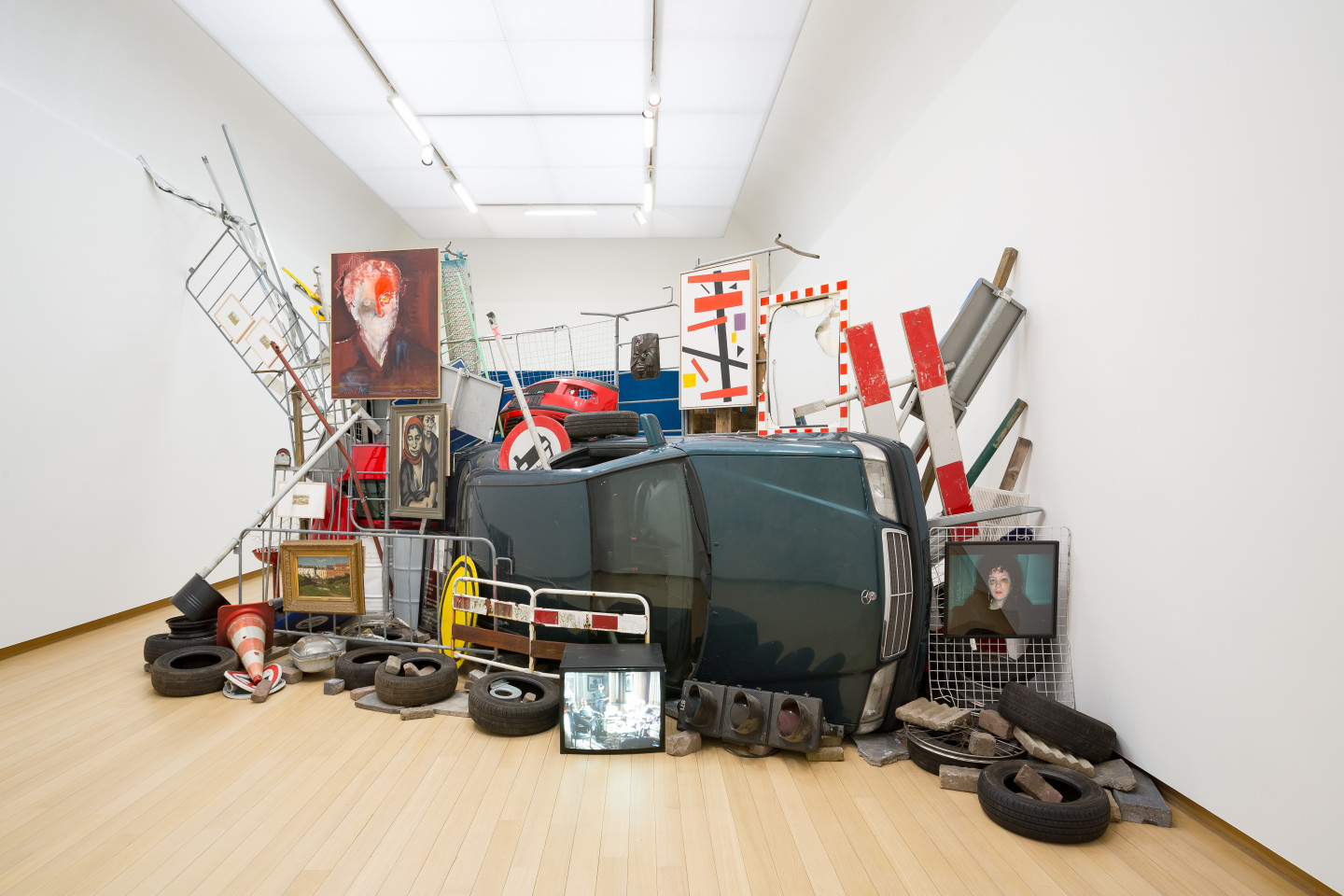
In early May 2024, student, staff, teacher, and activist coalitions in Amsterdam began pressuring local institutions to sever ties with Israeli universities and end collaborations in Israel. Their actions mirrored those of educational institutions worldwide, responding to decades of Palestinian land occupation and the relentless genocide in Gaza. The organizers escalated their efforts by establishing encampments at the University of Amsterdam, Vrije Universiteit, and Gerrit Rietveld Academie. Among them were artists and cultural workers who contributed to the encampments’ setup, documentation, and programming. The museums, meanwhile, stayed silent. Not much has changed since.
To protect these encampments and intensify pressure, organizers built barricades at entrances, aiming to delay the inevitable police-led dismantling. These makeshift structures—built from street furniture, trash, and bricks—spoke of resistance on two fronts: against genocide and against the state-sanctioned police violence used to suppress anti-genocide protests.
We knew our art history. Barricades, after all, are symbols of resistance—temporary, yes, but weighty. That’s how we arrived at Bakunin’s Barricade.
The links were already there. The exhibition from which the work was purchased in 2020 was titled “In the Presence of Absence”, a reference to the Palestinian national poet Mahmoud Darwish. The dialogue with Palestinian history was present even before we made our request. Darwish, after all, wrote the Palestinian Declaration of Independence in 1988, a document that described Palestine as “the state of Palestinians wherever they may be.”
There was poetry to our request, yes, but also practicality. Öğüt’s barricade included a twist. It wasn’t just made up of street furniture, but also of original artworks from the museum’s collection. The aim of using those original artworks was meant as a challenge to those that had a monopoly on violence. Would the police stop in their tracks if they encountered the barricade? Would they be deterred from breaking it apart if they understood it was made up of artworks and not just scaffolded trash? Would deploying art on a barricade make the barricade stronger? When first displayed at the Stedelijk, the barricade featured, among other artworks, the piece “Nan One Month After Being Battered, 1984” by Nan Goldin. Goldin, a Jewish-American artist, had been an outspoken voice for Palestine earlier this year, organizing tirelessly in New York.
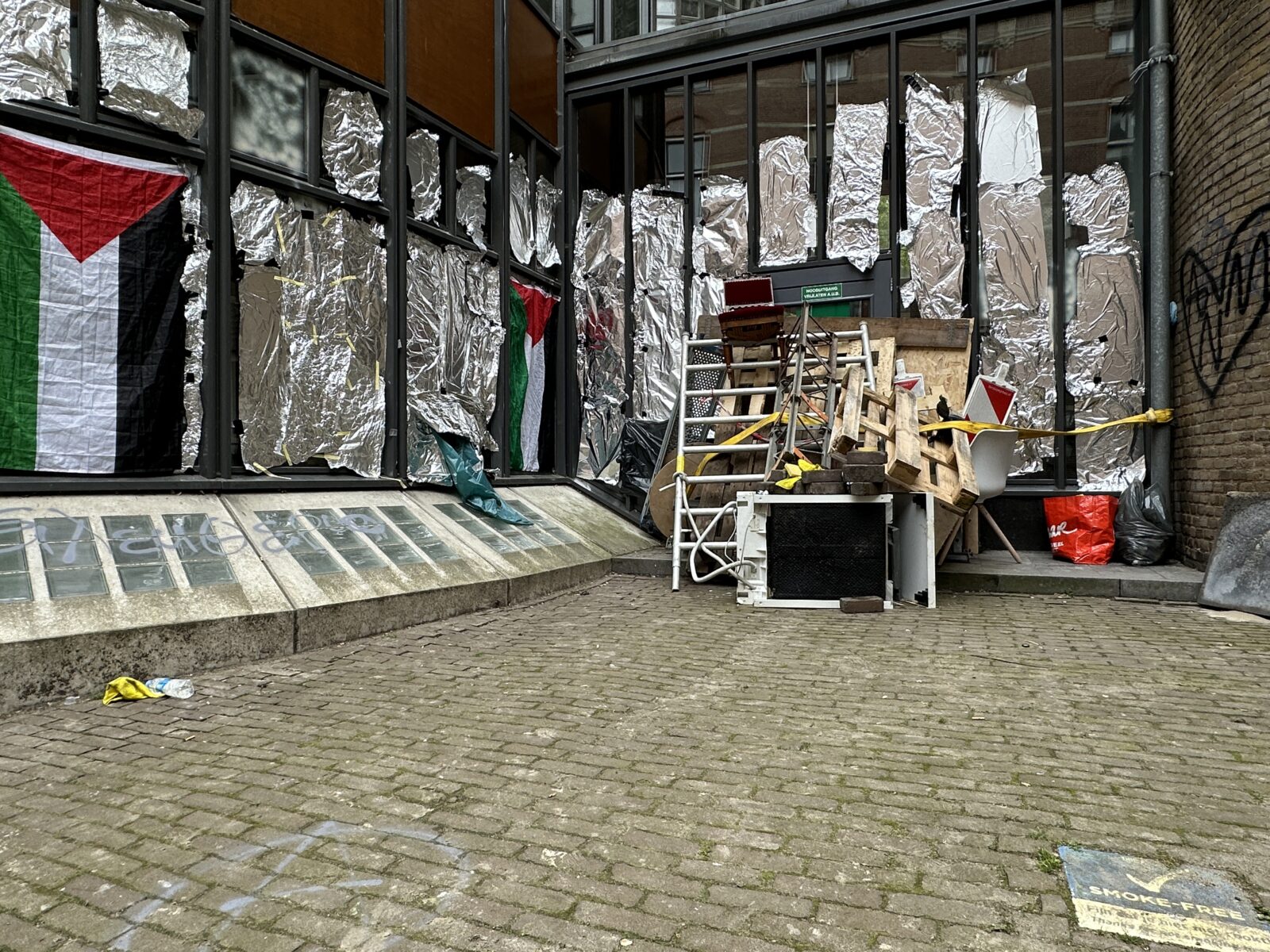
At the time of our request, some Amsterdam encampments had already been dismantled, while others persisted. We asked to place Bakunin’s Barricade at the encampments at Vrije Universiteit and Gerrit Rietveld Academie. The museum refused.
It remained unbudged.
Instead, we were offered three options—none of which addressed the heart of our request:
- Lending the barricade with replica artworks—blunting the work and misleading the public.
- Displaying it within the Stedelijk, alongside public programming.
- Displaying it in the Stedelijk with public programming co-created with us, the Collective.
We refused a diluted version of the barricade that was never intended for public space. We refused to curate programming alongside the museum. So the institution defaulted to the second option: showing the barricade within its own walls, accompanied by yet-to-be-determined programming.
Looking back, I weigh this moment. The greatest trick the contemporary art museum ever pulled was convincing artists of its relevance. The museum positions itself as a space connecting to issues beyond its walls, yet it never reforms its practices. It dangles promises: visibility, career advancement, a padded CV. But these promises come at a cost—silencing the urgency of artists willing to speak to the times they live in. For artists who take that risk, the museum offers a decided rebuttal.
We, as the Not Surprised Collective, chose to stop playing this game. After our request was denied, we refused to lend further work to the institution. We refused to participate in lending the museum any more legitimacy.
Still, we wondered: who would?


The Stedelijk Museum is Apolitical! And Other Myths You’re Being Spoonfed About the Arts
On November 9th, we got our answer during an afternoon program titled: “The Museum is (A)Political!”. Liberalism thrived, flattening any possibility of the museum displaying solidarity with Palestine. Amnesia would soon set in.
Fatoş Üstek, an independent curator and writer, pitched her book “The Art Institution of Tomorrow”—a work dropping the ideas of diverse teams, diverse programming, and cultural humility in museums (all ultimately ironic!). A conversation followed with Stedelijk Museum director Rein Wolfs and Richard Kofi, programmer at the Internationaal Theater Amsterdam.
During this discussion, the museum made clear: it does not make political statements. However, a key misunderstanding emerged around what politics even means. Wolfs conflated politics with party politics, rather than acknowledging that politics extends far beyond local governance. Politics involves ways of being in the world and agreements on shared morality—whether it be one’s stance on genocide, sovereignty, or human rights.
So, the museum does not, he claimed, engage in political statements. Instead, it serves as a platform for artists to make those statements—artists handpicked by the museum. A perfect circle.
And yet, statements were made, or perhaps unmade. In an attempt to justify its silence on Palestine, Wolfs stated that, in hindsight, the museum should not have made statements on Ukraine (pro) or Black Lives Matter (pro). In one fell swoop, nearly five years of the museum’s history of political engagement were erased, to the horror of those witnessing the panel discussion.
“The Museum is (A)Political!” took place just two days after clashes between Israeli football hooligans and locals in Amsterdam. This occurred amidst an announced protest ban—extended from two days to a full week—and a wider campaign of misinformation that enabled even harsher crackdowns on protests against the genocide in Palestine.
The afternoon concluded with a live performance by Maya Fridman and Soheil Shayesteh, featuring music from an album entitled “The Power of Indifference.” A nod to the Stoics perfectly matching the museum’s indifference to the political turmoil unfolding just outside its walls.
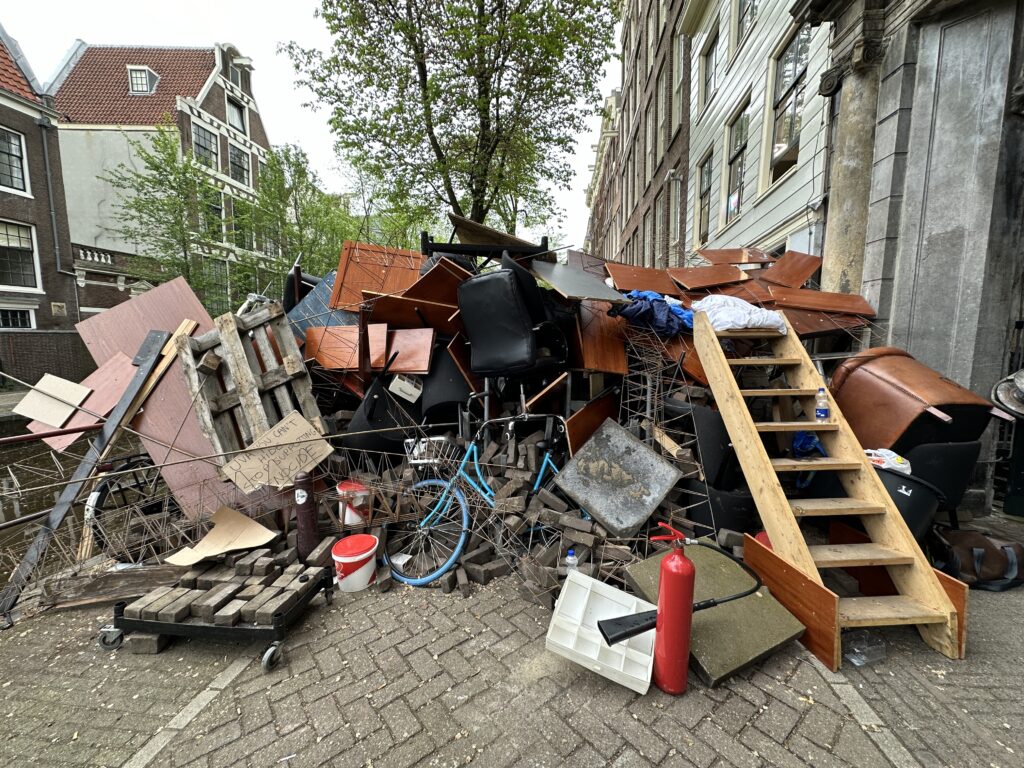

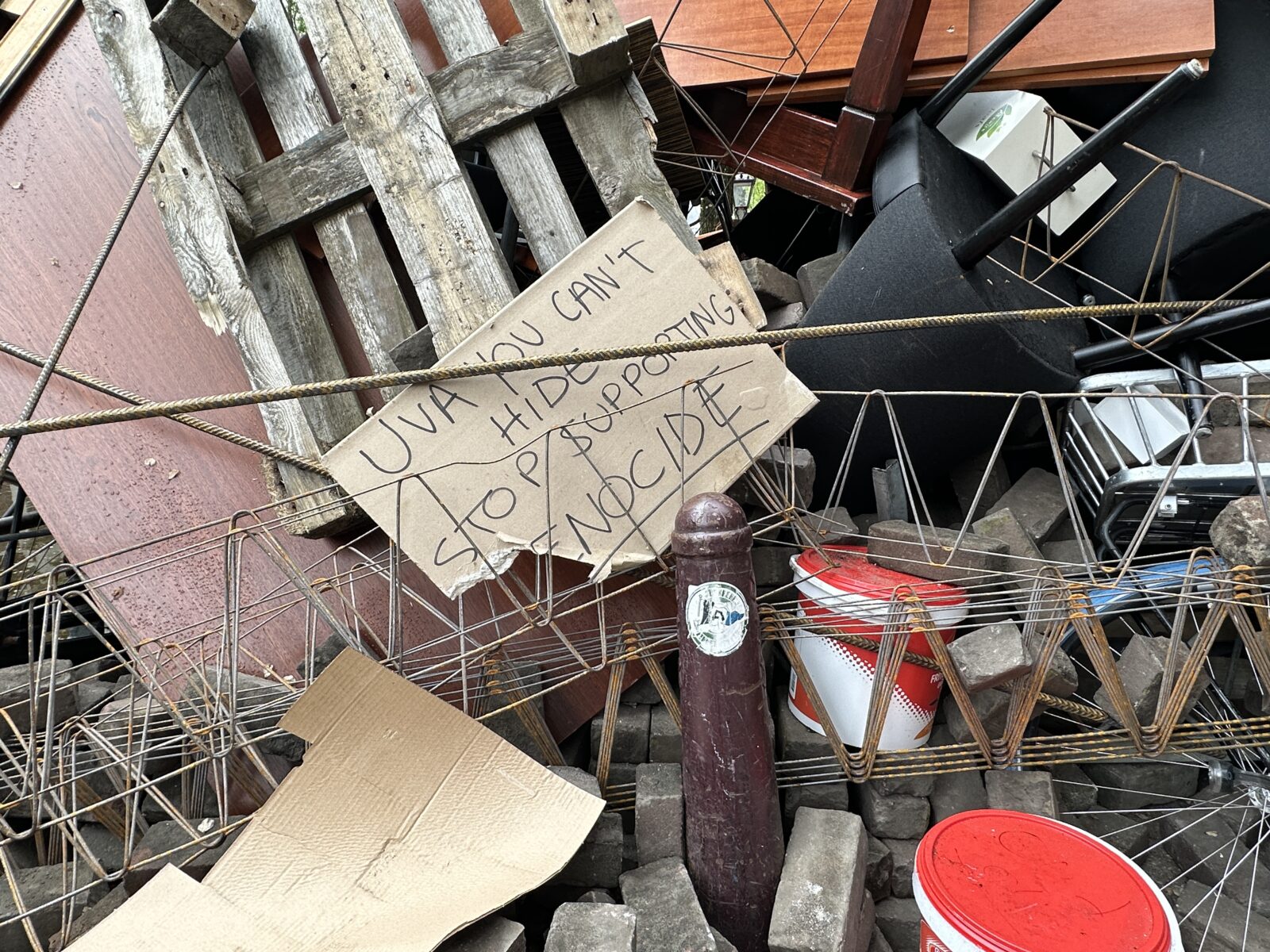
Whose Museum? Their Museum! The Only Way to Win Is to Not Play.
A room in the Stedelijk Museum. August 2024. A display titled “The Platform for Discontent.” A wall plastered with posters referencing decades of activism, from the 1960s to 2020. The accompanying wall text made a nod to the present: “Today in the Netherlands, we take to the streets to protest climate change, genocide, and racism, or the lack of affordable housing.”
History, flattened. Decades, blended. Visuals, layered haphazardly—pure visual association. Context stripped bare. The museum’s complicity in these very processes—climate change (How sustainable are museum practices?), genocide (Which genocide? Where? By whom?), racism (What’s the museum staff composition? What’s on display?), and gentrification (Is the museum a gentrifier, or simply working with them?)—never addressed.
One poster, in particular, caught my attention. The text read: “Stedelijk Museum. Politie Museum.” Signed: Uitgave CRM.
Online, I stumble across the protest it referenced — a moment ripped from its context: “In 1970, members of the Professional Association of Visual Artists (BBK) occupied the museum to reinforce their call for ‘democratization of culture,’ and then marched to the Rijksmuseum.”
Connecting the dots, it’s clear: the museum called the police on its occupiers. Not that it’s all that surprising.
In another room, same day, I found Bakunin’s Barricade on display. A jumble of street furniture piled up, leaving a narrow passage for visitors. A spider web dangled delicately from the work. A layer of dust—artfully placed—rested on its surfaces. Nearby, the work’s contract hung on the wall, alongside a text:
“The work, in this instance, poses questions about the value of art in times of crisis (which crisis?) or war (which war?). Should artworks be used as a means of defense (against what?)? To whom do artworks in public collections belong? And who decides which objects of cultural heritage should be preserved (clearly not the public! Turns out, not even the artist!).”
Here, as elsewhere, heritage is prioritized over people. The same narrative repeats inside the museum walls as it does outside—most recently with the student protests against the genocide being committed by Israel in Palestine.
Same room, another day—this time late November.
Beside the contract hangs a long email exchange, displayed proudly in two languages. Our Collective’s request to borrow Bakunin’s Barricade, followed by the museum’s denial, and a letter from Marlene Dumas, whose work originally also accompanied Öğüt’s barricade.
Appropriation completed, neatly packaged!
With one small adjustment: at the bottom of our original request, the names of the Not Surprised Collective’s members had been blacked out. We were never asked.
Institutions love to recount their history of resistance—once enough time has passed. These stories of friction and rebellion become badges of pride, proof of relevance to political waves crashing outside their walls. The act of resistance, once oppressive, is quickly appropriated. It’s what makes a place cool, after all.
For contemporary art museums, the pressure to stay relevant is even more urgent than the need to please their wealthy conservative patrons. And those patrons? They’re savvy enough to know that occasionally letting rebellion play out—diffused, displayed, framed—is good optics.
The only way to win is to not play.
We lose this round.

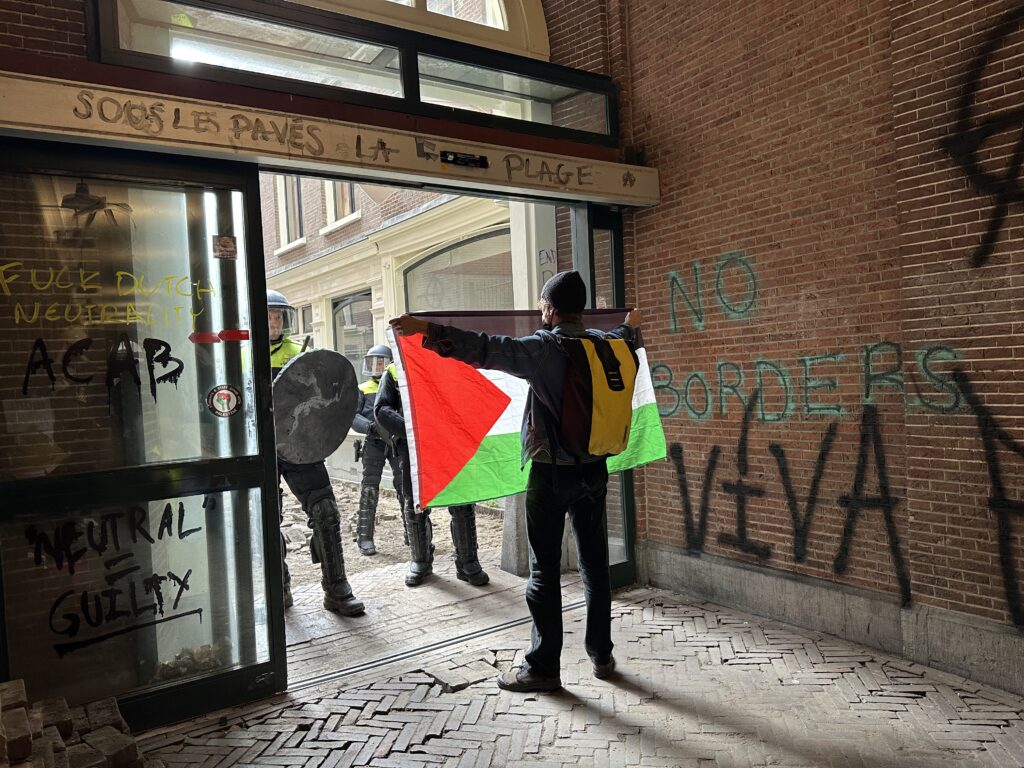
Epilogue: A Tale of Two Women On and Around a Barricade
- Or: When a Museum Tells You What They Are, Believe Them.
Miriam Cahn is just one year older than Israel. Born, raised, and educated in Basel, Switzerland, in 1949, she is Jewish, and much can be gleaned from the ways she positions herself and her work: her resistance to cancel culture, her insistence that you don’t need to be Black to address problems concerning Black people, her critiques of #MeToo for oversimplifying issues, her classification of ruangrupa as antisemitic.
Fine and well. But Miriam Cahn also “feels it is her duty to conjure the hardships of others in her signature, empathetic way.” She explains:
“It might be my Jewish side to tell myself that, if you have a privilege [such as freely making artwork in the Swiss Alps], then it’s your duty to comment on the pain of others. (…) To think: it could be me.”
Miriam Cahn’s work has been platformed by the Stedelijk Museum since October 2024, and here, finally, we find an instance of direct platforming on the topic of Palestine. It falls apart in a side room, where her chapter “WEINENMÜSSEN” (Having to Cry) is displayed. The paintings span October 8th to 23rd, 2023. Faces—crying faces. The second painting features a soldier, crying.
The wall text offers no context, relying solely on raw emotion. But the audioguide—voiced by Rein Wolfs—provides the missing piece: the works are linked to the Hamas attack on Israel on October 7th. Miriam’s solidarity is unidirectional, and so is her sadness. One year on, her works trap a moment in amber, stripped of its historical context—occupation, apartheid—and denying its further unfolding: the genocide.
A month later. Another context.
On November 22nd, 2024, Jewish-American photographer Nan Goldin—whose work “Nan One Month After Being Battered, 1984” was part of Bakunin’s Barricade in 2020—opened her retrospective at Berlin’s Neue Nationalgalerie. Her speech lasted 14 minutes. In it, she addressed Germany’s silencing of criticism against Israel’s war on Gaza. She also went further, condemning the museum’s censorship of her solidarity with Palestine and urging people to take to the streets.
In this case, the museum became a platform, but what kind of platform? Here we have a German museum, in a German city that has seen violent crackdowns on Palestine protests, censorship of exhibitions and artists, and fierce resistance from the artistic community through the initiative Strike Germany.
Despite this so-called openness to freedom of speech, the museum’s director Klaus Biesenbach followed Nan on stage, stating his disagreement with her stance while affirming her right to express it within the museum. His support of Israel and rejection of BDS, his references to Germany’s duty toward the Jewish state—all of it was drowned out, and rightfully so, by chants of “Viva, Viva Palestina!”.

